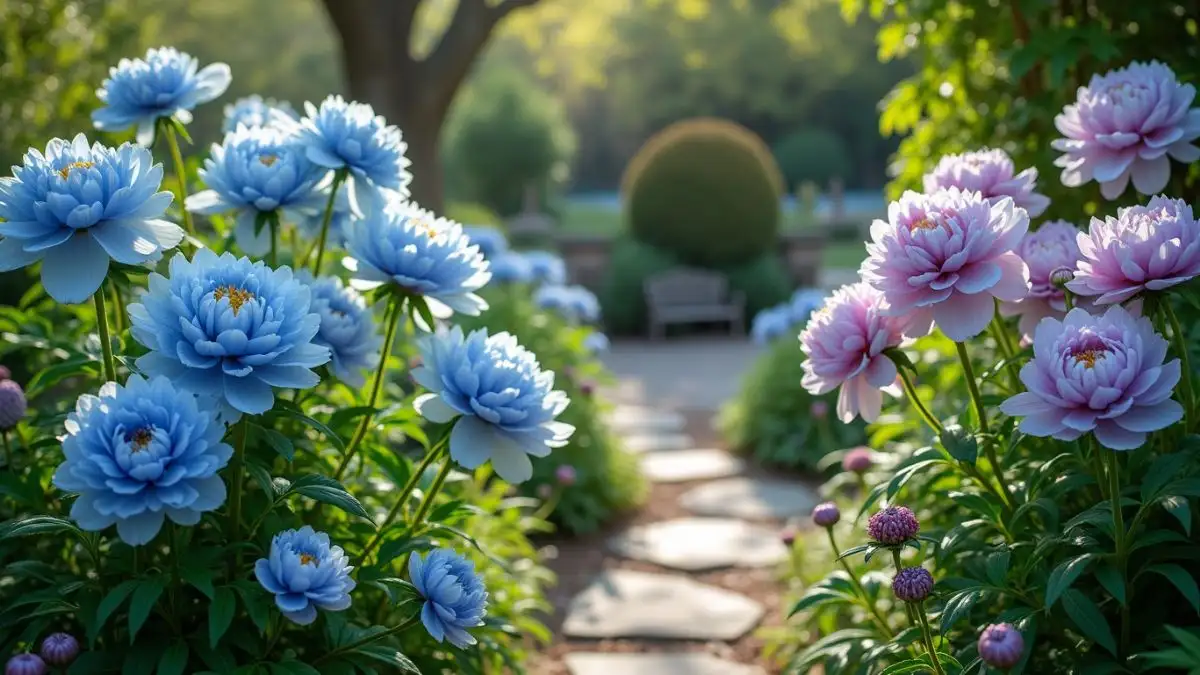Imagine stepping into your garden and being greeted by dazzling blue peony plants, their delicate petals glistening in the sunlight. These captivating flowers are more than just plants; they’re a statement of beauty, elegance, and serenity. Whether you’re an avid gardener or just starting your green journey, blue peony plants are sure to capture your heart. Let’s dive into the world of these unique blooms, explore their varieties, learn how to care for them, and discover why they belong in your garden.
Table of Contents
What Makes Blue Peony Plants So Special?
Blue Peonies: A Rare Beauty
Blue peony plants are not just ordinary flowers; they’re a masterpiece of nature and artistry. While true blue flowers are rare in nature, hybridization and creative techniques have made blue peonies possible. These blooms symbolize calmness, creativity, and prosperity, making them a perfect addition to any garden.
The Rarity of Blue Peonies
Blue peony plants stand out because of their uniqueness. Unlike other peony kinds, these flowers are celebrated for their mesmerizing shades of blue, often with subtle hints of purple or silver. Their distinct hues make them a favorite among gardeners seeking something extraordinary.
Symbolism of Blue Peony Flowers
In many cultures, peonies represent honor, wealth, and romance. Blue peony flowers, in particular, add a layer of tranquility and creativity to their symbolism. Incorporating these blooms into your garden isn’t just about aesthetics; it’s about cultivating a space that radiates peace and inspiration.
7 Stunning Blue Peony Varieties You’ll Adore
Here are seven breathtaking varieties of blue peony plants that will elevate your garden’s beauty. Each one possesses distinct qualities and charm.
- Duchess Peony
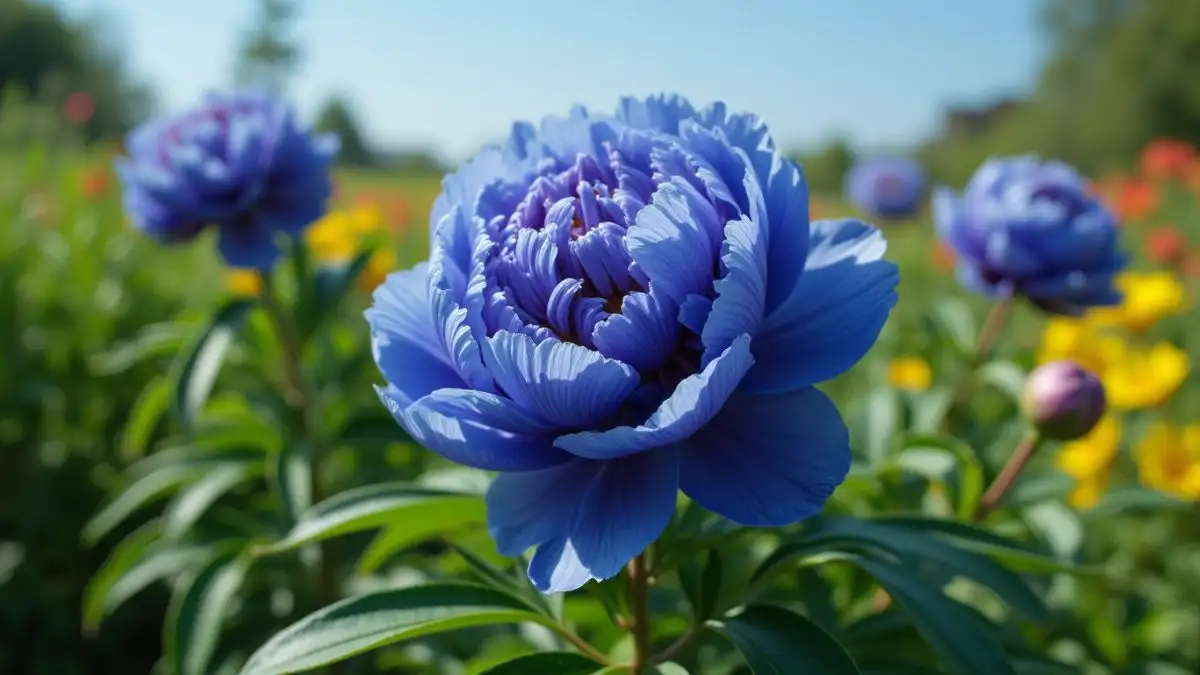
- Description: This variety features large, deep blue blooms with a touch of purple. Its elegant petals form a perfect sphere, making it a showstopper in any garden.
- Care Tips: Grow in well-drained soil and full sunlight.
- Fertilize during early spring for optimal growth.
- Ideal Use: Perfect for borders and as a garden centerpiece.
- Blue Wow Tulip Peony
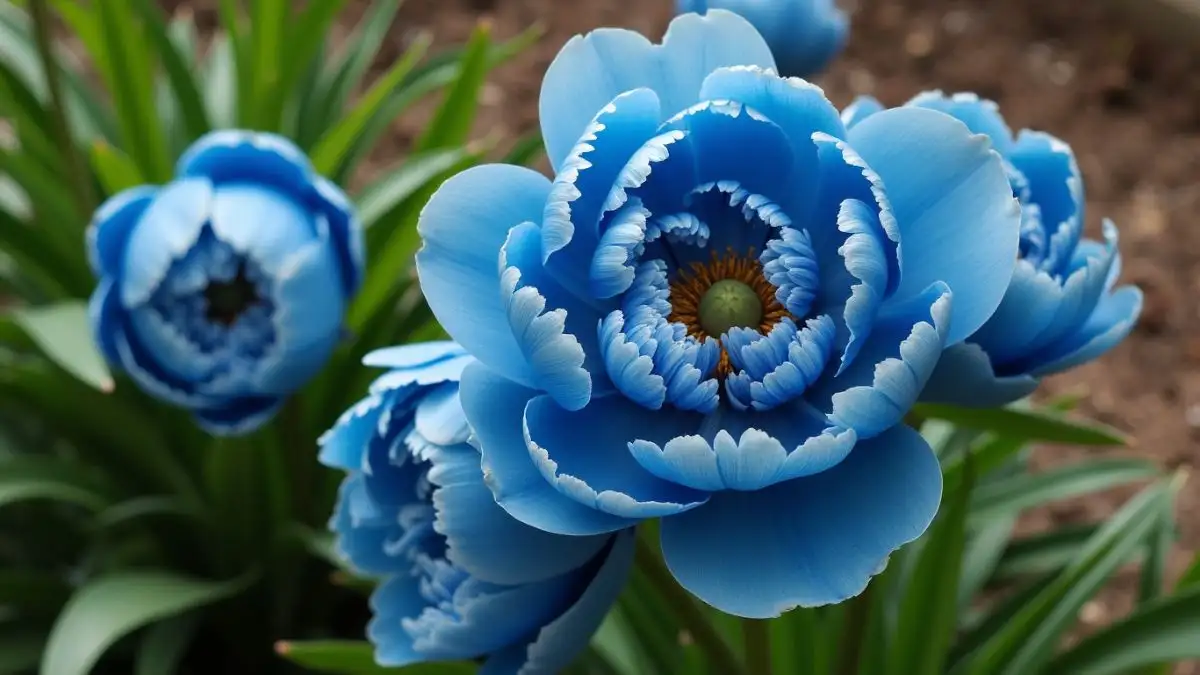
- Description: Known for its double-layered petals that resemble tulips, this peony is a visual delight.
- Care Tips: Thrives in partial shade with moist, loamy soil. Water regularly during the growing season.
- Ideal Use: Excellent for flower arrangements and bouquets.
- Seeing Blue Peony
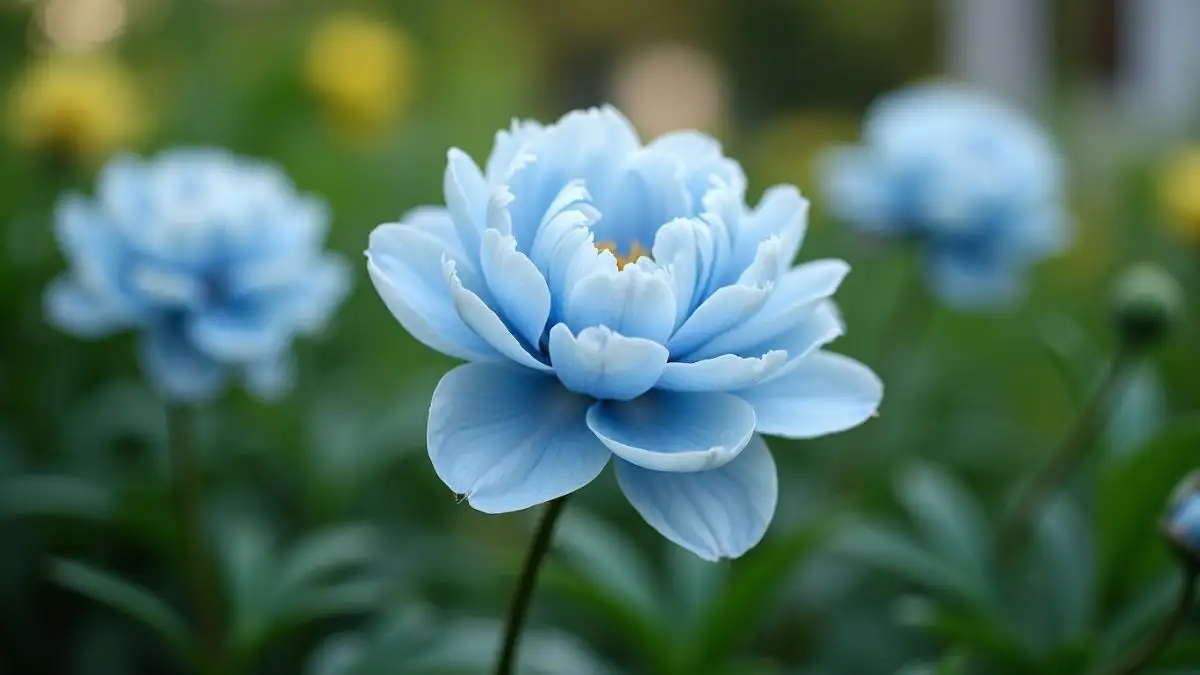
- Description: Pale blue petals with silver undertones make this variety a rare beauty.
- Care Tips: Thrives in well-drained soil and requires consistent watering.
- Ideal Use: Best suited for small gardens or container planting.
- Duchess Dark Blue Aster Hybrid
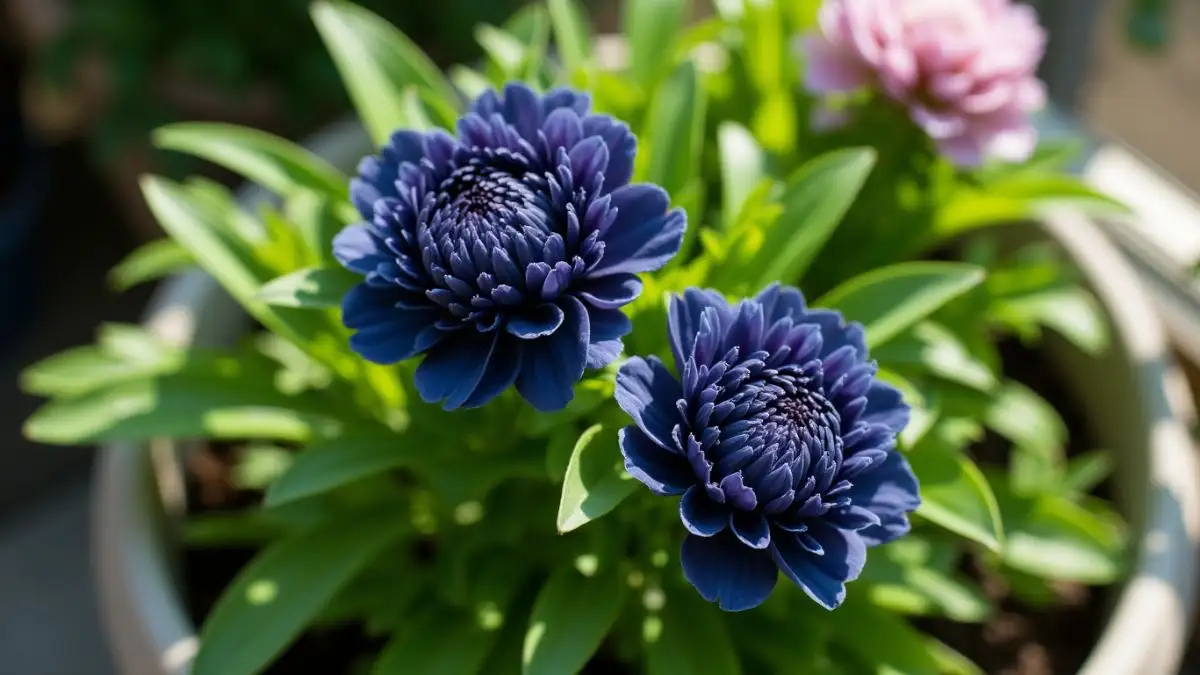
- Description: Compact, dark blue blooms with a subtle fragrance.
- Care Tips: Use slow-release fertilizers and ensure plenty of sunlight.
- Ideal Use: Perfect for container gardening and small spaces.
- Blue Satin Peony
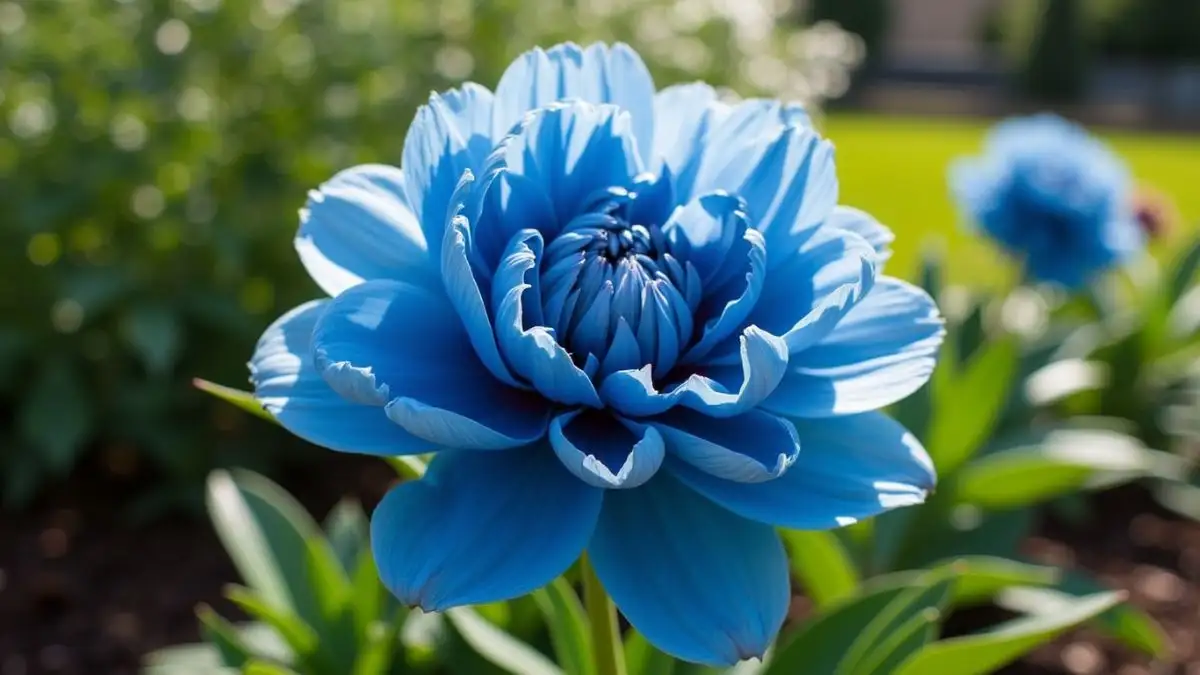
- Description: Vibrant, satiny blue petals that shine in the sunlight.
- Care Tips: Avoid overwatering to prevent root rot. Mulch during colder months.
- Ideal Use: Popular as cut flowers for events and home décor.
- Double Blue Peony Bush
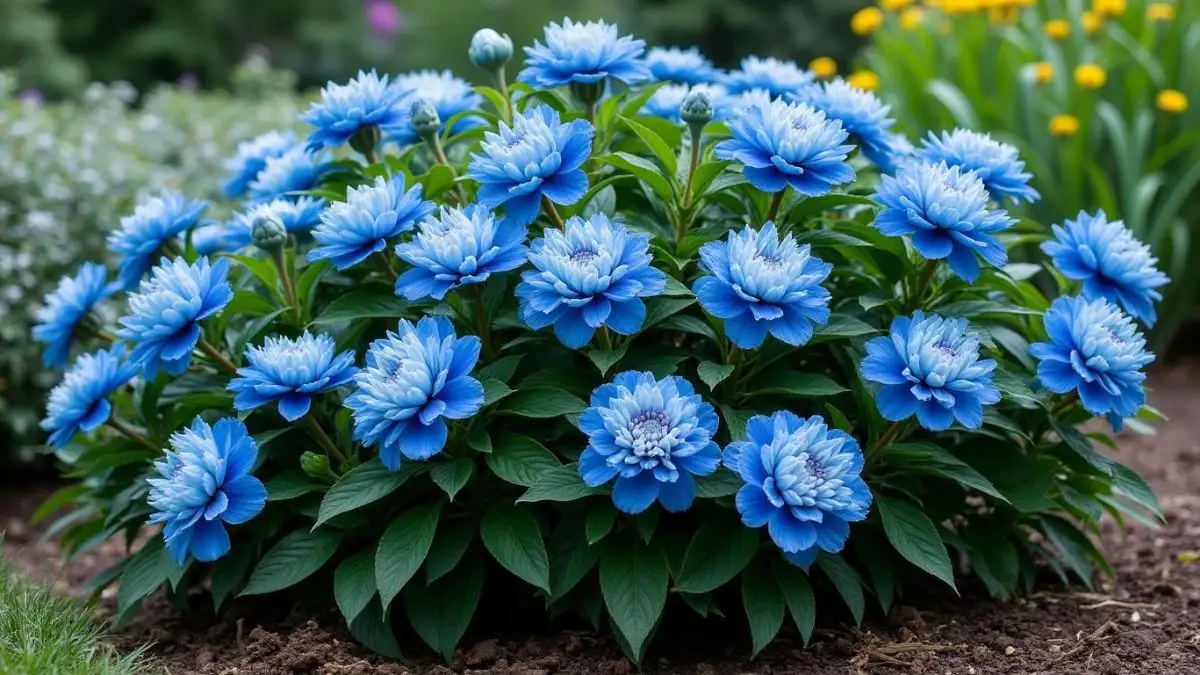
- Description: A bushy plant with double-layered blue blooms.
- Care Tips: Mulch the base to retain moisture and protect roots during winter.
- Ideal Use: Great for creating natural hedges.
- Artificial Blue Peony Bush
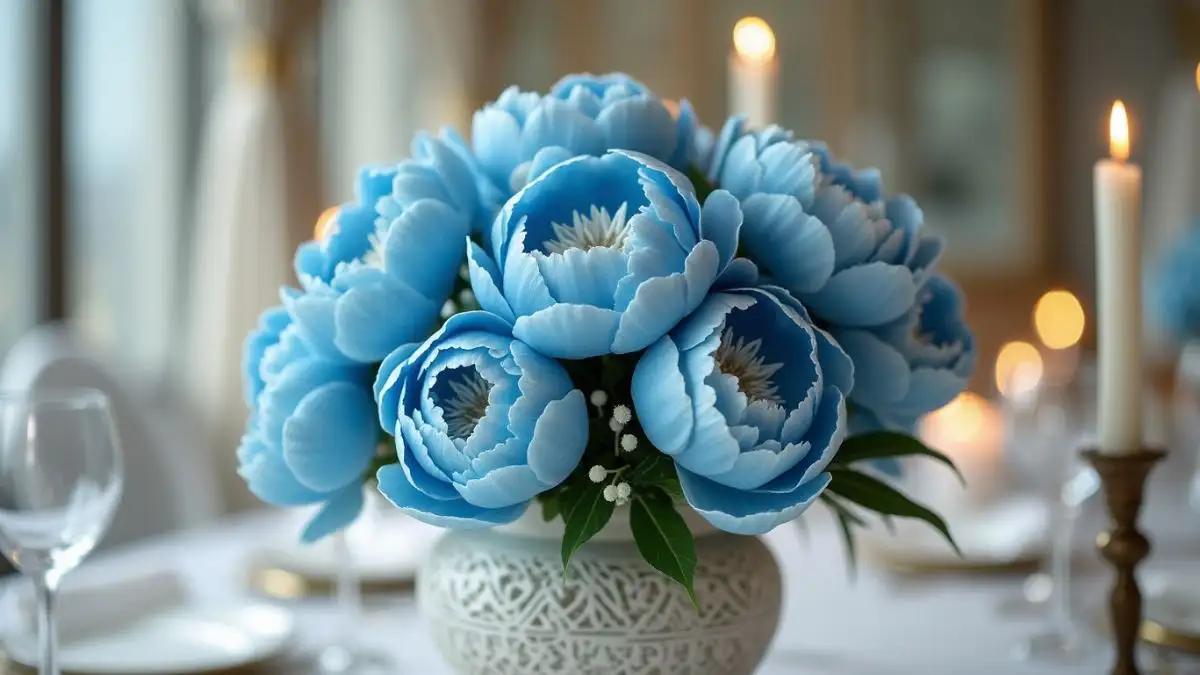
- Description: Though artificial, these low-maintenance options bring a touch of elegance to any space.
- Ideal Use: Perfect for weddings, events, and indoor decorations.
How to Care for Your Blue Peony Plants
Cultivating blue peony plants demands careful attention, but the results are truly rewarding. Use these tips to help your flowers flourish.
Planting Tips
- Season: For optimal results, plant in early spring or fall.
- Soil Preparation: Use nutrient-rich, well-drained soil with a neutral pH. Adding compost improves soil fertility.
- Spacing: Leave about 3 feet between each plant to ensure proper air circulation.
Seasonal Care
- Spring: Use a balanced fertilizer and prune away dead stems.
- Summer: Water consistently but avoid over-saturating the soil.
- Fall: Prune plants and divide roots if necessary.
- Winter: Mulch the base to protect roots from frost.
Common Pests and Diseases
- Aphids: Treat with organic insecticidal soap or neem oil.
- Powdery Mildew: Prevent by ensuring proper spacing and airflow.
- Botrytis Blight: Remove affected areas and improve drainage.
Enhancing Your Garden with Blue Peony Plants
Designing a Colorful Landscape
Blue peony plants can elevate your garden’s aesthetic. Pair them with complementary blooms like white lilies, deep red peonies, or fragrant peonies to create a vibrant color palette.
Incorporating Peony Blue Flowers
- Border Design: Use blue peonies along pathways or garden edges for a stunning effect.
- Central Focus: Create a focal point by planting a cluster of Duchess Peonies or Blue Wow Tulip Peonies.
Benefits of Fragrant Peonies
While blue peonies are primarily admired for their unique color, some varieties offer a delicate fragrance. Incorporating fragrant peonies adds an extra layer of sensory delight to your garden.
Creative Uses for Blue Peony Flowers
Home Décor
- As Cut Flowers: Add elegance to your home by arranging blue peonies in vases. Their vibrant hues make them perfect for living room or dining table décor.
- DIY Wreaths and Frames: Use dried blue peonies to craft stunning wreaths or pressed flower frames.
Culinary Inspiration
While not all peonies are edible, petals from safe varieties can be used for unique recipes. Try making blue peony tea for a soothing drink.
Blue Peony Tea Recipe
| Ingredient | Amount | Instructions |
| Dried blue peony petals | 2 tbsp | Steep in boiling water for 10 mins |
| Honey | 1 tsp | Add to taste |
| Lemon | 1 slice | Optional for flavor |
Gifting Ideas
- Bouquets for Special Occasions: Blue peony bouquets make stunning gifts for weddings, anniversaries, or birthdays.
- Pressed Flower Art: Frame pressed blue peonies to create personalized, memorable gifts.
Landscaping Ideas with Blue Peony Plants
Creating Natural Hedges
Bushy varieties like Double Blue Peony Bush make excellent hedges, adding both structure and fragrance to your garden.
Container Gardening
Compact varieties such as Duchess Dark Blue Aster Hybrid are ideal for patios or balconies. Choose decorative pots to elevate their aesthetic charm.
Seasonal Displays
Rotate your garden design with seasonal blooms. Combine blue peonies with spring tulips or summer daisies for a dynamic look.
Blue Peonies in Public Spaces
Blue peonies can be used to beautify community parks, creating serene and inviting environments. Their unique color draws attention and admiration from visitors.
Where to Buy Blue Peony Plants
Finding genuine blue peony plants can be challenging, but these tips can help:
- Reputable Nurseries: Check online nurseries like Burpee or visit local garden centers.
- Certifications: Look for reviews and certifications to ensure quality.
- Avoid Scams: Be cautious of overly cheap offers, as they may be misleading.
- Specialty Growers: Seek out specialty growers who focus on rare or hybrid flowers.
Frequently Asked Questions About Blue Peony Plants
- Are blue peonies naturally blue?
- No, most blue peonies are hybrids or dyed, but they’re still stunning and unique.
- How long do blue peonies bloom?
- Typically, they bloom for 7-10 days during late spring or early summer.
- What is the best soil type for blue peonies?
- They thrive in nutrient-rich, well-drained soil with a neutral pH.
- Can blue peonies grow in containers?
- Yes, compact varieties are ideal for container gardening. Ensure the pot has proper drainage.
- How much sunlight do blue peonies need?
- They need at least 6 hours of full sun daily to bloom well.
- Are blue peonies fragrant?
- Certain varieties have a subtle fragrance, enhancing their appeal.
- How can I protect blue peonies in winter?
- Apply mulch around the base of the plants to protect the roots from frost damage.
- What are common pests affecting blue peonies?
- Aphids and spider mites are common. Use organic sprays to manage infestations.
- Can I propagate blue peonies?
- Yes, root division in fall is the most effective propagation method.
- Where can I buy authentic blue peony seeds?
- Reputable online nurseries and garden centers are your best options.
Conclusion
Blue peony plants are much more than stunning additions to your garden; they are living symbols of elegance, tranquility, and creativity. Their rarity, paired with their vibrant hues, sets them apart as unique blooms that can transform any space into a serene retreat. Whether you’re drawn to the Duchess Peony’s majestic beauty or the compact charm of the Duchess Dark Blue Aster Hybrid, there is a variety to suit every gardening style and space.
Beyond their aesthetic appeal, blue peony plants invite you to connect with nature in meaningful ways. Their versatile uses—whether as breathtaking cut flowers, eco-friendly home décor, or delightful culinary ingredients—demonstrate their enduring charm and practicality. Additionally, these flowers inspire creativity, making them ideal for anyone seeking to add a touch of originality to their gardening or design projects.
For those embarking on the journey of cultivating blue peony plants, proper care is essential but deeply rewarding. By understanding their seasonal needs, addressing potential pests, and implementing thoughtful landscaping ideas, you can ensure that these remarkable flowers thrive for years to come.
Investing in blue peony plants means more than beautifying your garden—it’s about creating a personal haven of calm, color, and inspiration. As you nurture these blossoms, you’ll find that they not only enhance your outdoor spaces but also uplift your mood and spark joy with their stunning display.
Are you ready to embrace the magic of blue peony plants? Start your journey today by exploring reputable nurseries or visiting your local garden center. For more expert gardening advice and creative ideas, check out our blog. Let your garden flourish with the timeless beauty and elegance of blue peony plants!


